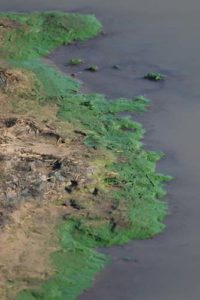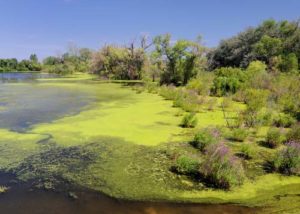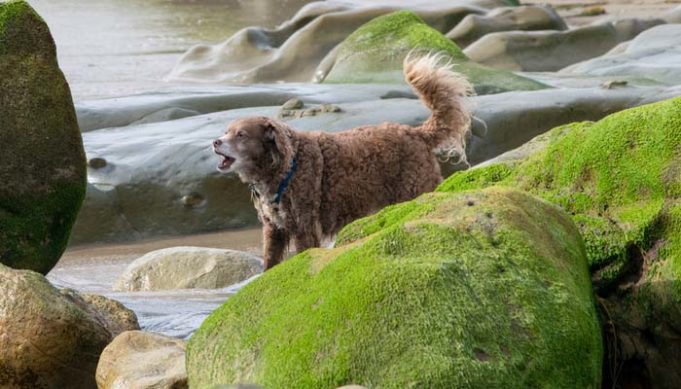Some public areas in Florida have already closed and several dogs have landed in the hospital because of blue-green algae poisoning.
Florida has been on high risks from this toxic blue-green algae infestation which is particularly dangerous to dogs. Since mid-summer, various environmental health agencies have sounded off the alarm on its potential toxic effects on humans. However, even dogs are apparently not safe from this group of bacteria.
 A report from the TC Palm stated that a 9-year-old poodle named Finn died due to the toxins from the blue-green algae found in the St. Lucie River. Tests showed that the dog's blood, liver, and urine contained cyanobacteria.
A report from the TC Palm stated that a 9-year-old poodle named Finn died due to the toxins from the blue-green algae found in the St. Lucie River. Tests showed that the dog's blood, liver, and urine contained cyanobacteria.
The dog's owner, Misty Aydelotte, confirmed to the press that the bacteria severely destroyed her poodle's insides. But it was not the first dog to be reported with blue-algae poisoning.
Dog Victims of Blue-Green Algae Poisoning
Two Golden Retrievers named Sammy and Savvy also had similar symptoms as the poodle. They were traveling with their family and passed through the same river over the summer.
But while Sammy and Savvy are currently recovering, another Golden Retriever is still fighting for her life in Stuart, Florida. According to WPTV, 4-year-old Costa played in the water of the Rio river and then later started vomiting. She suffered liver failure and is still getting treatments at a pet clinic. It might be months before Costa can fully recover.
Meanwhile, dog owner Laura Schmidt, who also lives along the St. Lucie River, noticed that her dog developed eye problems after learning about the toxicity of blue-green algae. Her pup has been taking antibiotics for this but she's still worried about what other harm the bacteria may cause, especially since there is no antibiotic for the toxin.
Protecting Dogs from Blue-Green Algae
 It seems inhaling the air around the algae is in itself a health risk. People complained that it had a nasty and deadly smell that caused itchy eyes, nausea, running nose, and other respiratory problems.
It seems inhaling the air around the algae is in itself a health risk. People complained that it had a nasty and deadly smell that caused itchy eyes, nausea, running nose, and other respiratory problems.
Aside from swimming or drinking algae-infested water, contamination might also happen if the dog or human ate fish caught from this toxic environment. So, as prevention is better than cure, it's best to keep your dogs away from the water. If you have to go on walks, always put your dog on a leash so it won’t wander near the water.
However, if you believe your dog swam in the water, you can immediately do two things. First, prevent it from licking itself. Then, hose the dog down or give it a thorough bath immediately with clean water. Don’t forget to use gloves when you’re handling your dog.
The effects of the poison depend on how much the dog ingested. However, time is of the essence in saving an infected dog’s life. So, for good measure, contact your veterinarian to report what happened to the dog even after you’ve cleaned him off.
Check any open or standing water around your house, as these may be contaminated too. Empty out or cover bird baths or garden buckets, as well as any container that your dog might be tempted to drink from.
Signs to Watch Out For
Not every algae presence is toxic but it’s hard to know for sure if the water near your area is safe without any tests. So, look for any of these signs that might indicate poisoning and immediately bring your dog to vet, as per the Pet Poison Hotline (PDF):
- vomiting
- drooling
- diarrhea
- breathing problems
- seizure
- weakness
- unconsciousness
- disorientation
Blue-green algae typically survive in freshwater. It grows all year round in Florida but its blooms multiply productively in the summer and autumn season. It is these blooms that carry the toxins that contaminate the water, according to the Florida Fish and Wildlife Conservation Commission (FWC).
READ NEXT: Water Intoxication in Dogs – What You Must Know [Infographic]













